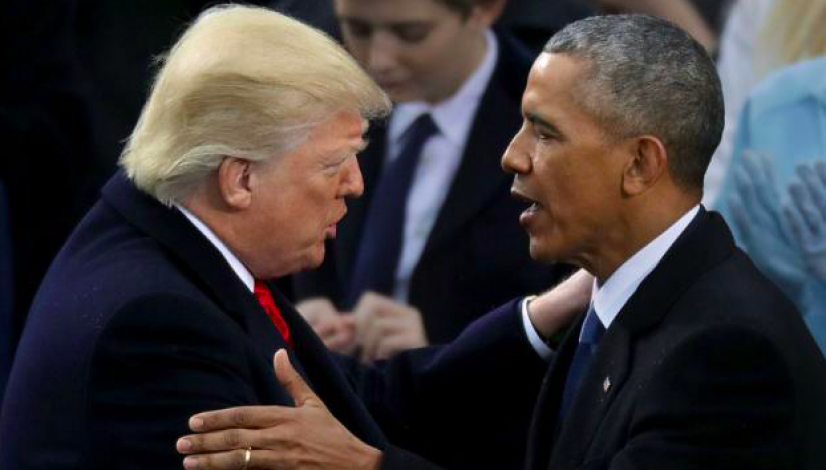‘Trumponomics’ beats ‘Obamanomics’ hands down

Tear your eyes away from the Stormy Daniels brouhaha for a moment (I know, it’s hard) and here’s what you’ll find:
- a jobless rate that is the lowest it’s been in 17 years;
- modest inflation;
- a growing number of people back in the workforce;
- small-business profits at the highest level in at least 45 years;
- rising wages; and
- increasing business investment.
It is truly, as incoming New York Fed Governor John Williams recently commented, a Goldilocks economy.
I mention these things because you may well have missed the brightening economic picture, so dour is the political divide and so partisan is the mainstream media.
Democrats are loathe to cheer the gains in jobs and pay, because an election is coming up, and instead of talking about the employment numbers, they want to talk day and night about the best known porn star since Linda Lovelace.
Democrats are also frantic that any of our economic gains be accredited to President Trump; he is mainly covered in the press for denying knowledge of a $130,000 payment to Daniels. Who would have ever thought that Trump would be in hot water because he knew something? Generally, excess knowledge has not been his Achilles’ heel.
But here’s what President Trump does know: He knows that with today’s lower taxes and lighter regulation are enticing businesses from all over the world to invest in the United States, and that they will create jobs here. He also knows that, unleashed, American businesses can outperform any on earth.
They already are. The latest jobs report saw 168,000 jobs added, including a hefty gain in manufacturing, a sector that has steadily expanded in recent months but was all but written off by the gloomy types who say we can’t grow above 2 percent.
The U.S. has added jobs for 91 straight months, the longest winning streak ever. In April, the official unemployment rate sank to 3.9 percent for the first time since December 2000.
Despite an obviously tightening jobs market, wage growth is modest, up in the last month only 2.6 percent, year-over-year. That’s better than the 2-percent increases of recent years, and better than the cost of living, but not the kind of expansion that immediately stirs concerns about general inflation. The lack of wage pressure continues to confound policymakers, but it should not.
First, the unemployment data does not fully reflect how many people are not working. Those who get discouraged and stop looking for jobs are excluded from the figures. For normal people, not counting folks who truly cannot find work in the ranks of the unemployed seems an odd approach, but government bean-counters are not like you and me, and they like it that way.
As wages have inched up and jobs become more plentiful, a great many people have rejoined the workforce, rebuffing those who imagined a looming labor shortage, in part due to the aging of the population.
The “demographics are destiny” folks never had an explanation, though, for the decline in participation among younger people. Many adults age 25 to 54, the so-called “prime-age” category, dropped out of the workforce in recent years.
Maybe they really thought they could invent the next Facebook in their basements or maybe they went back to school; or maybe some took advantage of President Obama’s loosening of the rules for collecting some types of welfare payments, as conservatives have argued.
In any event, those critical workers are now responding to the improved jobs market; the percentage of people between 25 and 54 working or looking for work increased over the past year from 80 percent to 82 percent.
That’s an important shift, and could well explain why wages are not going up more rapidly. Not only are newer workers coming back into the pool, boosting the numbers, but companies can usually hire younger people at lower pay than those with more experience.
It is almost certain that wages will begin to accelerate. The labor pool is not limitless, and companies in some sectors are already competing by raising pay. In construction, for instance, where we have added 257,000 jobs over the past year, wages are up 3.5 percent.
As paychecks rise, it is possible inflation increases as well. Keeping price hikes from endangering the recovery will fall to the Fed, whose record for managing inflation is imperfect, to put it mildly.
More jobs and better pay is, of course, the outcome many of us had predicted from President Trump’s economic agenda. Getting government out of the way and unleashing the animal spirits of the economy was an entirely foreign concept to Obama’s liberal policy team.
They disdained the participation and input of businesses, preferring to micromanage the employment scene from the Beltway.
They fastened onto wrestling pay higher through raising the minimum wage, a policy that often led to layoffs or automation, both harmful to the mother working part-time by choice or the student gaining important jobs skills.
Letting the markets work is an old-fashioned nostrum, but curiously, it seems to be getting a second look these days. And that’s more good news.
Published on The Hill



